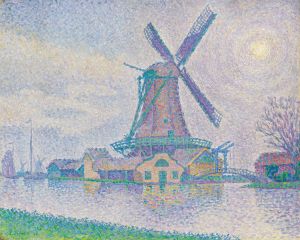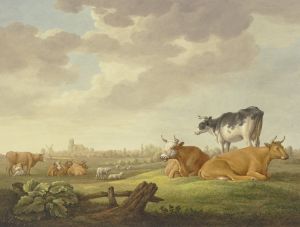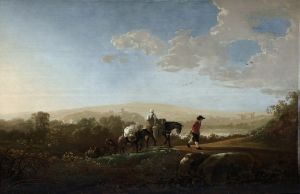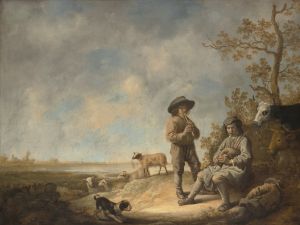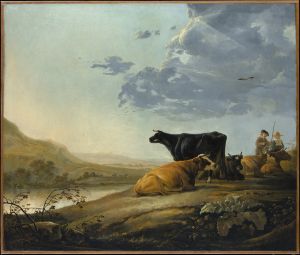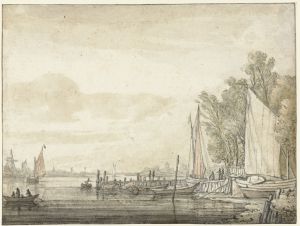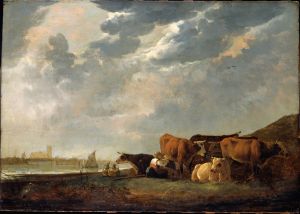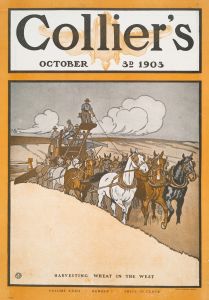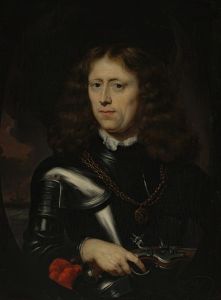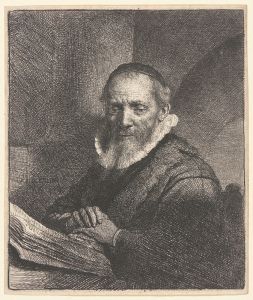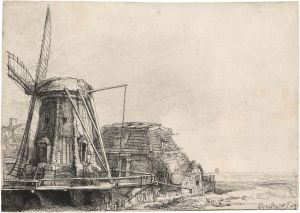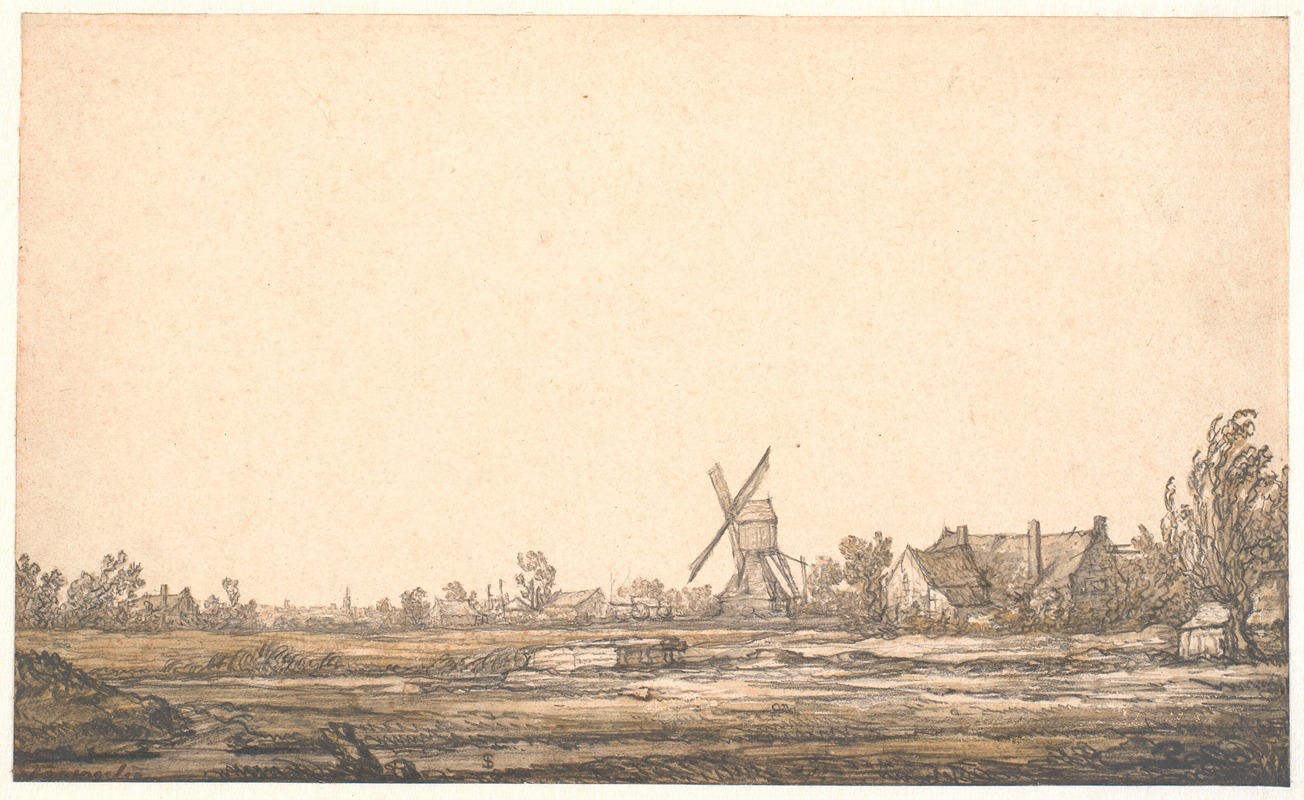
Landscape with a windmill
A hand-painted replica of Aelbert Cuyp’s masterpiece Landscape with a windmill, meticulously crafted by professional artists to capture the true essence of the original. Each piece is created with museum-quality canvas and rare mineral pigments, carefully painted by experienced artists with delicate brushstrokes and rich, layered colors to perfectly recreate the texture of the original artwork. Unlike machine-printed reproductions, this hand-painted version brings the painting to life, infused with the artist’s emotions and skill in every stroke. Whether for personal collection or home decoration, it instantly elevates the artistic atmosphere of any space.
"Landscape with a Windmill" is a painting by the Dutch artist Aelbert Cuyp, a prominent figure of the Dutch Golden Age known for his landscape paintings. Born in Dordrecht in 1620, Cuyp was part of a family of artists; his father, Jacob Gerritsz Cuyp, was also a well-regarded painter. Aelbert Cuyp's works are celebrated for their luminous quality and serene depiction of the Dutch countryside, often featuring expansive skies and warm, golden light.
The painting "Landscape with a Windmill" exemplifies Cuyp's mastery in capturing the tranquil beauty of rural scenes. While specific details about the creation date of this painting are not well-documented, it is generally believed to have been produced during the mid-17th century, a period when Cuyp was most active and prolific.
In "Landscape with a Windmill," Cuyp employs his characteristic use of light to create a harmonious and peaceful scene. The composition typically includes a windmill, a common feature in the Dutch landscape, symbolizing the Netherlands' relationship with water management and agriculture. The windmill is often set against a backdrop of expansive skies, which Cuyp skillfully renders to convey a sense of depth and atmosphere. His use of warm tones and soft contrasts enhances the idyllic quality of the scene, inviting viewers to appreciate the quiet beauty of the natural world.
Cuyp's landscapes often include figures, such as farmers or travelers, and animals like cattle or horses, which add a narrative element to the scene. These figures are usually depicted in a relaxed manner, contributing to the overall sense of calm and tranquility. In "Landscape with a Windmill," the presence of human and animal life serves to emphasize the harmonious coexistence between people and nature, a theme prevalent in Cuyp's work.
Aelbert Cuyp's influence extended beyond his lifetime, as his works were highly regarded by later artists and collectors. His ability to capture the essence of the Dutch landscape with such clarity and warmth made his paintings sought after, particularly in England during the 18th and 19th centuries. Cuyp's work was admired by artists such as J.M.W. Turner and John Constable, who drew inspiration from his treatment of light and atmosphere.
Today, "Landscape with a Windmill" and other works by Aelbert Cuyp can be found in major art collections and museums around the world. They continue to be appreciated for their technical skill and the serene beauty they portray, offering a glimpse into the pastoral life of the Dutch Golden Age. Cuyp's legacy as a master landscape painter endures, and his works remain a testament to the enduring appeal of the natural world as a subject of artistic expression.





